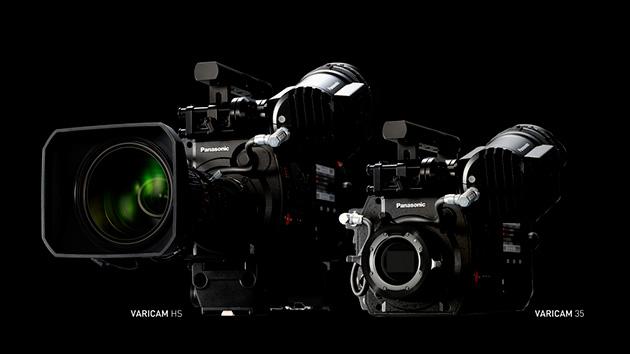
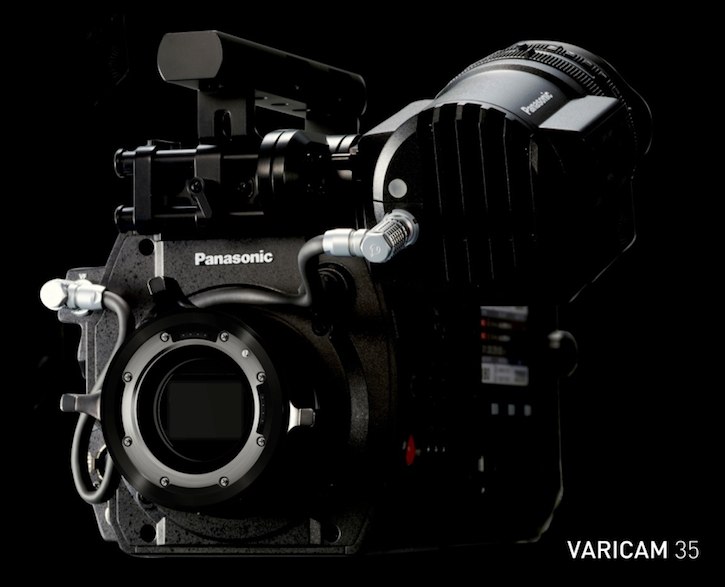 The VariCam 35 (AU-V35C1) has a Super-35mm 4K MOS sensor for 4096 x 2160 (17:9) image capture. Panasonic says this new sensor has 14+ stops of dynamic range and can output 4K images up to 120 fps. This module will come in PL mount, so of course we're pretty excited about the possibilities for cinematic acquisition.
The VariCam 35 (AU-V35C1) has a Super-35mm 4K MOS sensor for 4096 x 2160 (17:9) image capture. Panasonic says this new sensor has 14+ stops of dynamic range and can output 4K images up to 120 fps. This module will come in PL mount, so of course we're pretty excited about the possibilities for cinematic acquisition.
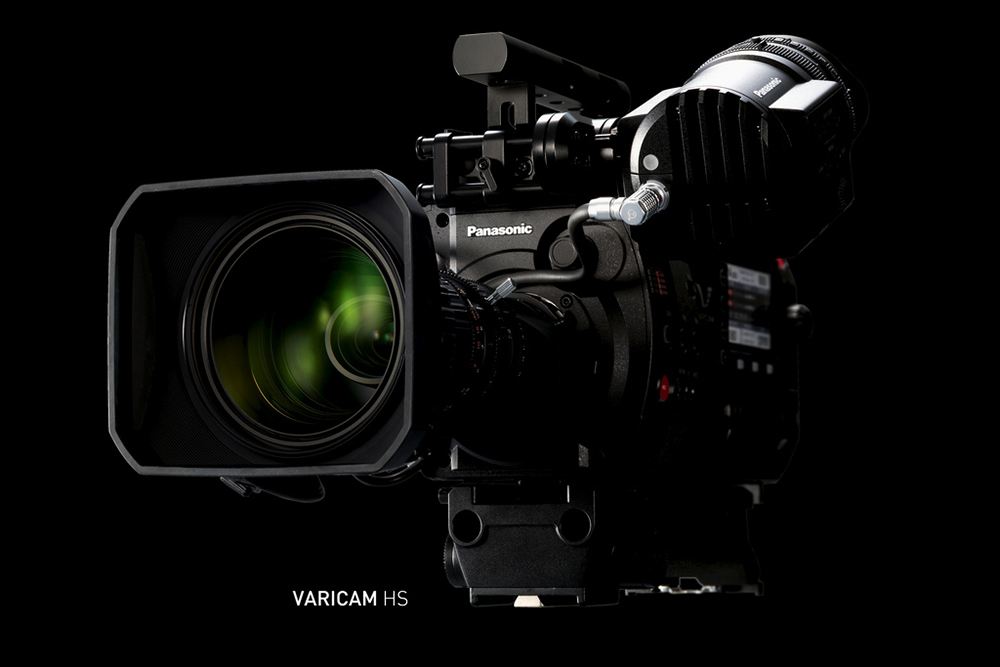 The other camera module announced by Panasonic is the VariCam HS (AU-V23HS1), which is a high speed 2/3" camera head featuring three 1920x1080 MOS sensors. According to Panasonic, the sensor can output up to 14 stops of dynamic range and do frame rates up to 240 fps. The module works with all standard 2/3" lenses and features a B4 mount.
The other camera module announced by Panasonic is the VariCam HS (AU-V23HS1), which is a high speed 2/3" camera head featuring three 1920x1080 MOS sensors. According to Panasonic, the sensor can output up to 14 stops of dynamic range and do frame rates up to 240 fps. The module works with all standard 2/3" lenses and features a B4 mount.
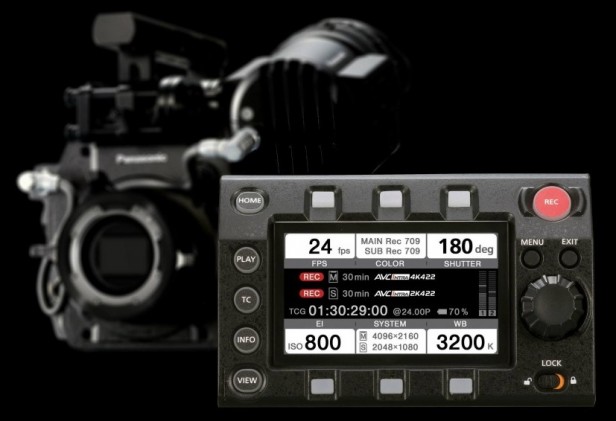 Both of these camera modules will interface with the same recorder unit (AU-VREC1). The camera heads can be docked directly to the recorder or attached via an umbilical cable (think Alexa M). This combination can record in the AVC-ULTRA and AVC-Intra codecs. When combined with the VariCam 35, you'll get 4K & UHD in AVC-ULTRA 4K, and 2K & Full HD in AVC-Intra 100/200. The VariCam HS's recording formats include AVC-Intra 100 (recording as 1080/24p, 30p or 60p format with VFR, up to 240p), AVC-Intra 200 (up to 30p/60i) and AVC-Intra Class 4:4:4 (up to 30p). AVC-Intra 200 has twice the data rate of AVC-Intra 100, and AVC-Intra Class 4:4:4 delivers the highest quality results with 12-bit depth and 4:4:4 color subsampling.
Both of these camera modules will interface with the same recorder unit (AU-VREC1). The camera heads can be docked directly to the recorder or attached via an umbilical cable (think Alexa M). This combination can record in the AVC-ULTRA and AVC-Intra codecs. When combined with the VariCam 35, you'll get 4K & UHD in AVC-ULTRA 4K, and 2K & Full HD in AVC-Intra 100/200. The VariCam HS's recording formats include AVC-Intra 100 (recording as 1080/24p, 30p or 60p format with VFR, up to 240p), AVC-Intra 200 (up to 30p/60i) and AVC-Intra Class 4:4:4 (up to 30p). AVC-Intra 200 has twice the data rate of AVC-Intra 100, and AVC-Intra Class 4:4:4 delivers the highest quality results with 12-bit depth and 4:4:4 color subsampling.
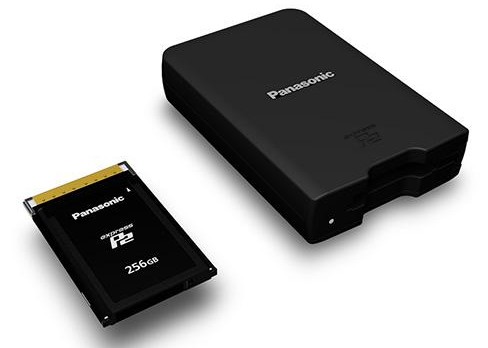
The recorder features four memory card slots - two that utilize a new expressP2 media format, and the other two recording to microP2 cards. The new high-speed expressP2 cards (AU-XP0256A) allow for the VariCam 35's recording of 4K video at frame rates up to 120 fps, as well as the 2/3" VariCam HS's 1080 HD recording at frame rates to 240 fps. ExpressP2 cards come in a 256 GB size and ensure high-speed transfer with speeds up to 2.4 Gbps. They contain a flash memory error correction system, equivalent to a RAID system, meaning they can recover from a failure in a sector, page, or entire block. The expressP2 card is the same basic size as a standard P2 card, with 1.5x the thickness. The recorder can simultaneously record to both the expressP2 cards as well as the microP2 cards, allowing for proxy recording. MicroP2 is plenty fast though, so we can expect to be able to record 4K to the expressP2 cards, as well as AVC-Intra to the microP2 at the same time.
Panasonic's recorder features many SDI outputs allowing for HD, 2K, and 4K video monitoring. It can also output 4K Raw data directly to an external recorder, so while you're getting high quality video internally, you can record 4K Raw externally.
The new cameras will feature a new Panasonic Log mode, which we will learn more about in the future, and a fantastic color management system. On-set color management is a big deal with Raw and Log recording, and Panasonic has really worked hard on making it great in these cameras. They will be able to record in Log (or Raw externally) while viewing LUTs on your monitor and viewfinder. Additionally, the same LUT can be baked into the proxy recording on the microP2 card at the same time.
The cameras also feature a newly-developed OLED electronic viewfinder (EVF) with optical zoom functionality. 24-bit LPCM audio is added for in-camera audio recording, as well as a familiar camera control interface that can be moved to either the operator or assistant side of the camera.
We are really looking forward to seeing what these new VariCams can do, so look for more from us on these cameras at NAB. For more information, visit Panasonic's website and read their full press releases on the VariCam 35 and VariCam HS.
Interested in getting one of these cameras early? Get on our VariCam 35 or VariCam HS interest list today!


















